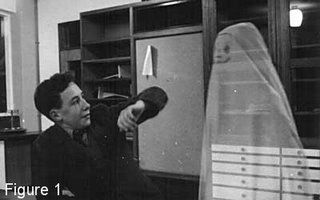Dust particles. Microscopic pieces of pollen. Glare produced from a light source. Mistakes in film processing. None of these common occurrences seem very frightening or mysterious when they are described as what they truly are. However, all these annoyances of both amateur and professional photographers take on a completely different air when they are depicted as “ghost orbs.” An orb, as defined by The Skeptic’s Dictionary, is, “…an alleged ghost, spirit energy, or multi-dimensional being invisible to the naked eye but visible as a ball of light on film.” For some strange reason, pictures of dust particles illuminated by camera flash pass for acceptable evidence for the existence of ghosts nowadays. I can’t help but laugh when the host of a television show such as Most Haunted marvels when an insect or piece of dust particulate in the air illuminated by the production lights floats past the viewfinder of the camera he or she is holding. “Oh, we got one!” or “Did you see that?!” the host usually blurts out, as though he or she had seen the ghostly image of some long dead celebrity. Alas, neither the shades of James Dean nor Marilyn Monroe are ever captured on film. Instead, all the viewer witnesses is further proof of the fact that the main point of such shows is not to search for evidence of the paranormal but to merely increase there ratings.

It is rather peculiar to think that the ghost photos of the 1920s and 1930s, double exposures(Figure 1) or pictures of alleged “ectoplasm” (Figure 2), are found to be humorous and naïve by modern ghost hunters. However, if a ghost photographer in the 1920s or ‘30s produced an image displaying an “orb” and expected to sell it to the local newspaper, he would most likely be laughed out of the editor’s office. Why, as technology has increased, has the standard for evidence of paranormal phenomena decreased? Shouldn’t the public expect a higher degree of evidence than that which was acceptable in the 1920s? What if the fields of medicine and physics had not advanced in eighty years? If the field of paranormal investigation, or parapsychology as it is sometimes called, wants to be considered a legitimate science, they certainly have some catching up to do.




